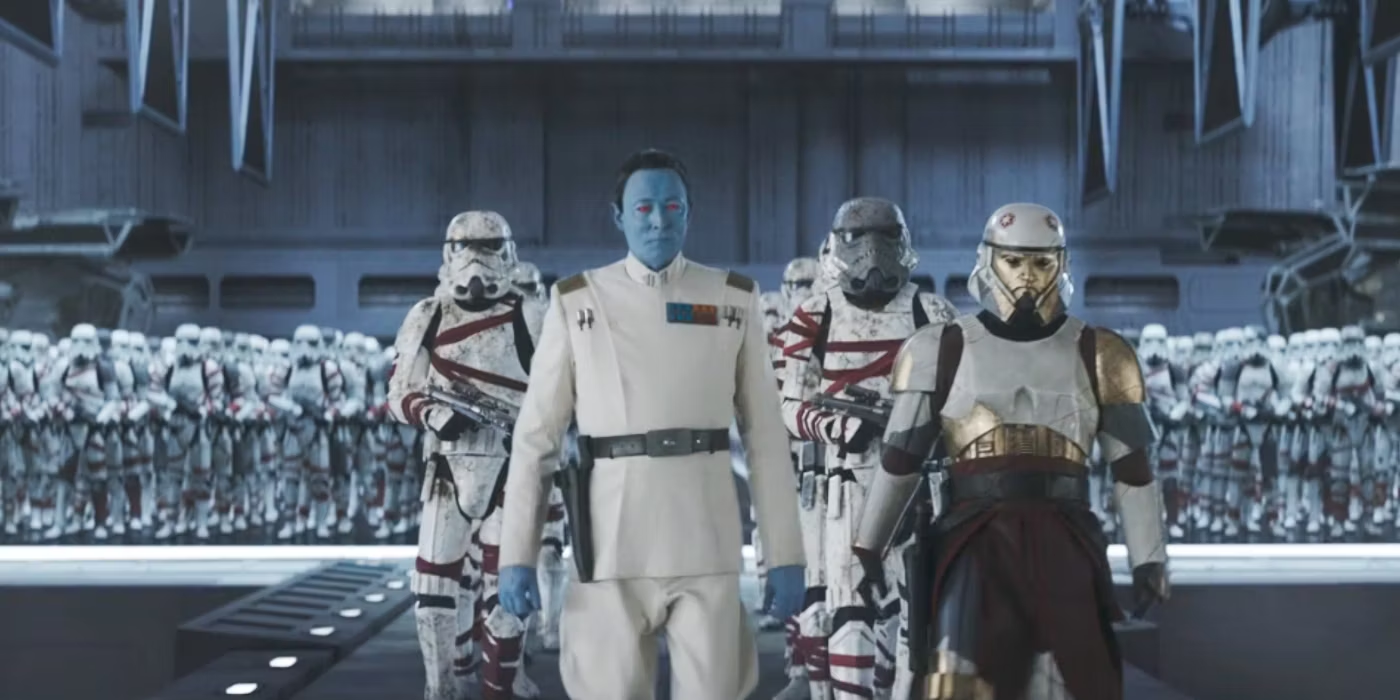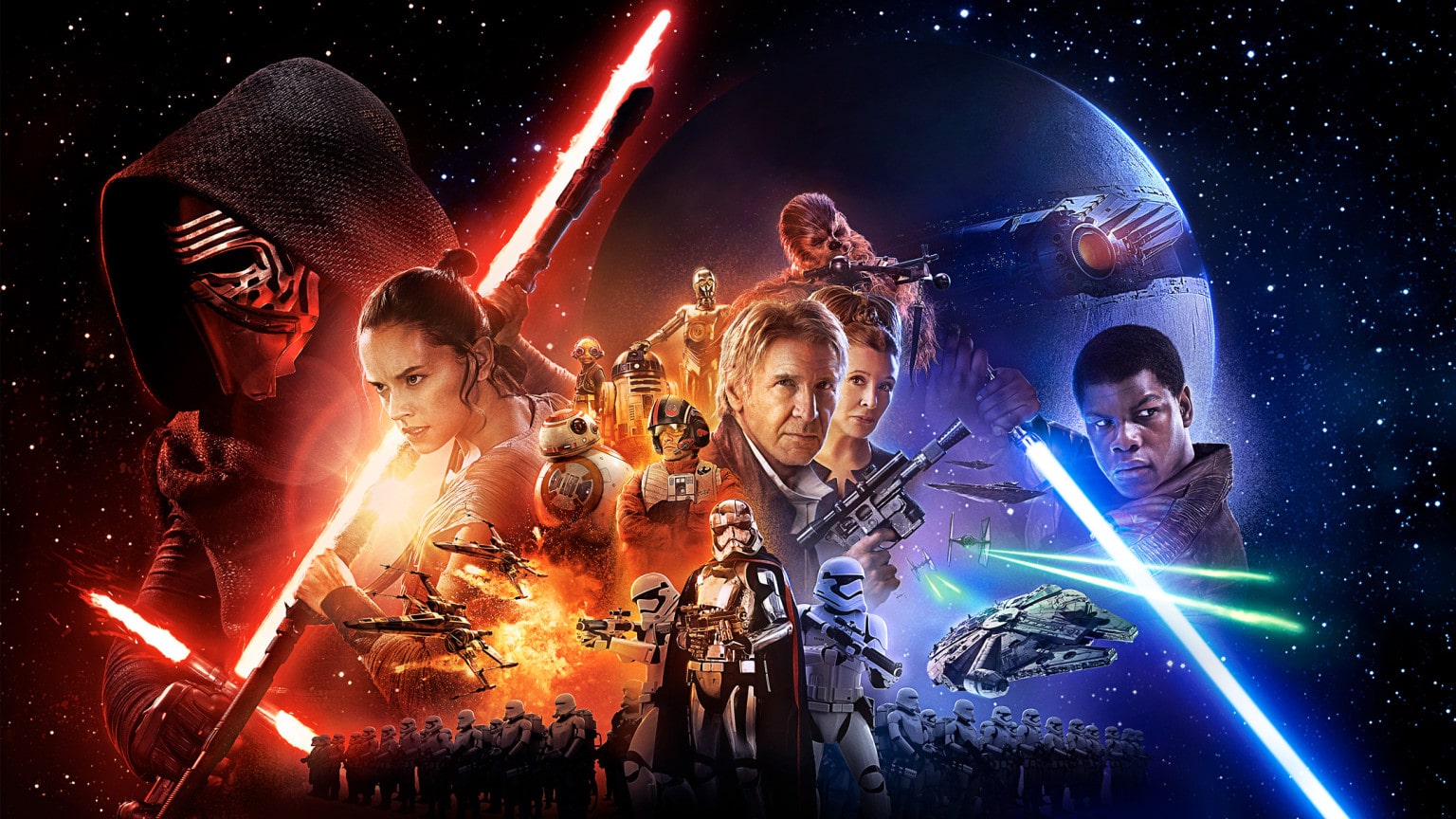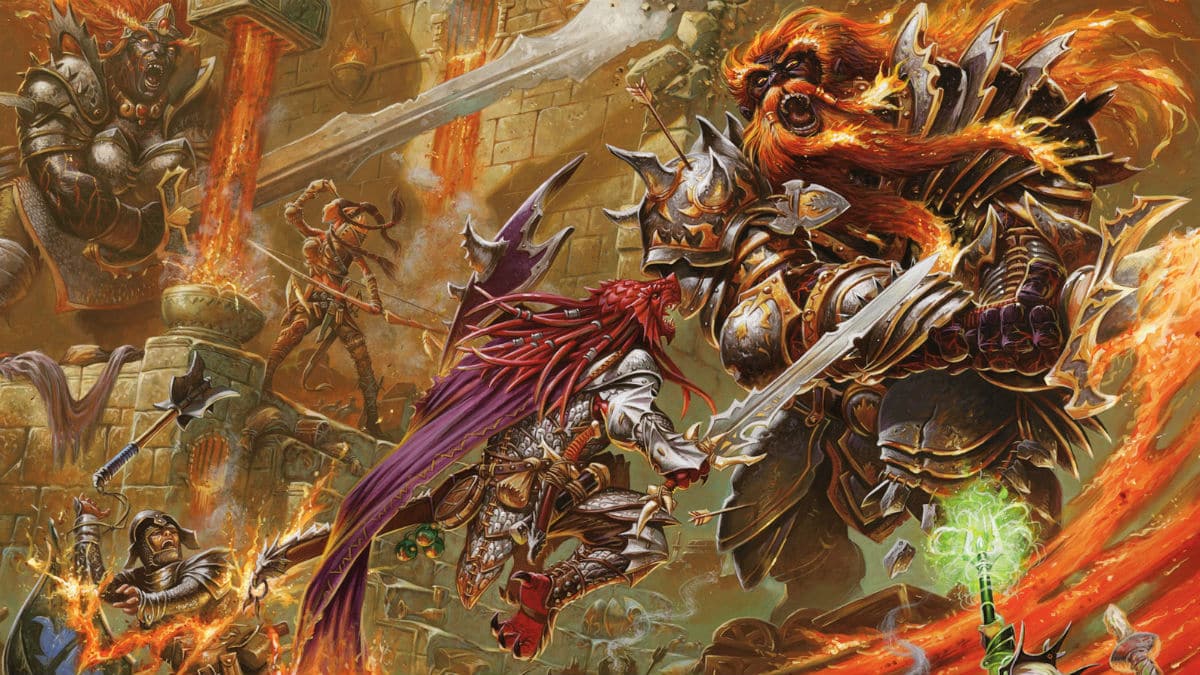In the expansive universe of Star Wars, bringing animated characters to live-action is a task fraught with challenges. However, for “Ahsoka” showrunner Dave Filoni, the transition of Grand Admiral Thrawn from the beloved animated series “Star Wars: Rebels” to the live-action realm presented unique hurdles. Speaking with Empire magazine, Filoni shared insights into the meticulous process of recreating Thrawn for “Ahsoka” Season 1, highlighting the technological and artistic nuances involved.
A Technological Conundrum
Thrawn, a character revered for his strategic mind and distinctive blue-skinned appearance, made his live-action debut portrayed by Lars Mikkelsen, who also lent his voice to the character in “Star Wars: Rebels”. Filoni, determined to preserve the character’s iconic look, faced an unexpected challenge: Lucasfilm’s StageCraft technology, known as the Volume. This cutting-edge technology, which uses a 360-degree LED soundstage to render photorealistic backgrounds in real-time, inadvertently cast a magenta tone on performers, complicating Thrawn’s signature blue complexion.
The Volume, a revolutionary development in filmmaking, allows for immersive and dynamic backgrounds to be seamlessly integrated with live-action performances. It was pioneered during the production of “The Mandalorian” and has since become a staple in Star Wars television projects. However, Filoni’s dedication to authenticity meant that Mikkelsen’s makeup had to be meticulously adjusted depending on the filming stage to counteract the magenta hue and achieve the perfect shade of blue.
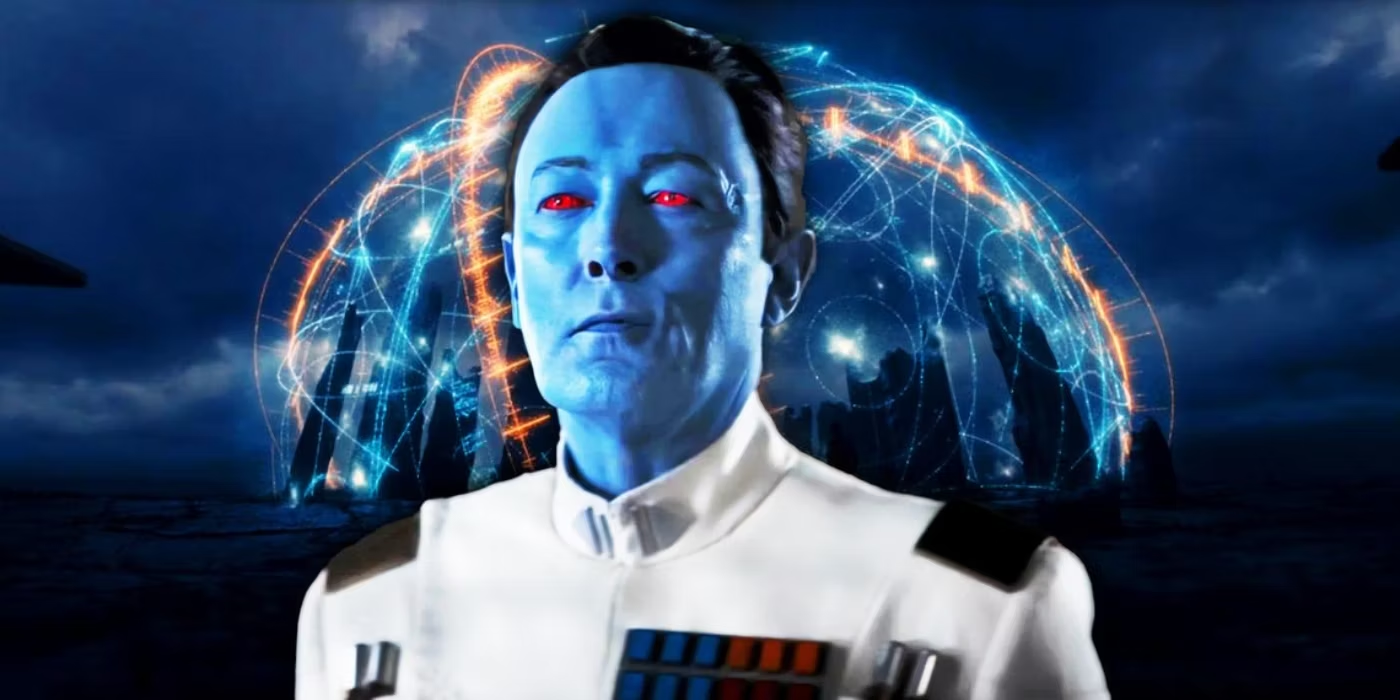
Adapting to the Volume’s Illusions
The Volume’s immersive environment also poses challenges beyond color correction. Actors like Bill Burr from “The Mandalorian” have noted the sensation of vertigo caused by the shifting backgrounds, underscoring the need for performers to adapt to this unique filming context. Moreover, the effectiveness of the Volume’s illusion hinges on precise conditions, including lighting and the positioning of actors in relation to the projected backgrounds.
Despite these hurdles, Filoni and his team embraced the learning curve, viewing it as an opportunity to push the boundaries of what’s possible in live-action storytelling. The successful integration of Thrawn into “Ahsoka” is a testament to their perseverance and innovation, showcasing the franchise’s commitment to evolving film technologies.
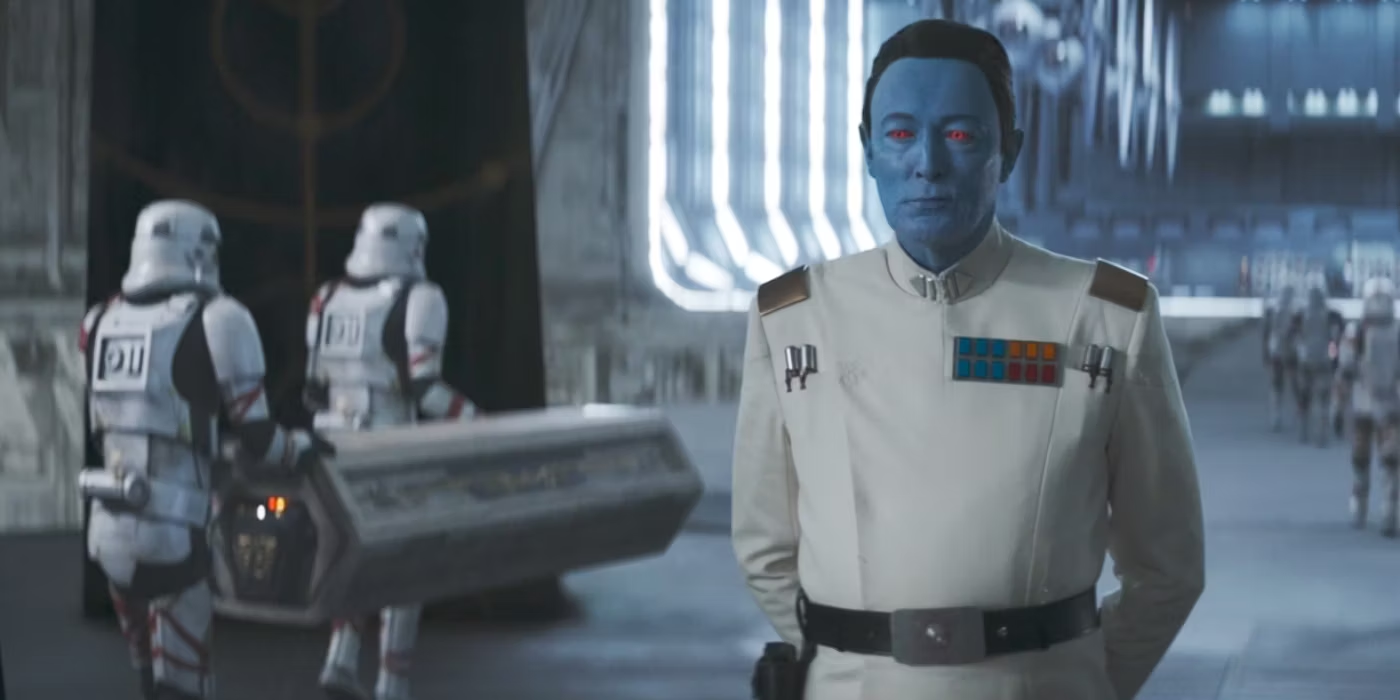
A Triumph in Character Adaptation
The effort to bring Thrawn to life in “Ahsoka” ultimately paid off, with Mikkelsen’s portrayal receiving acclaim from fans and critics alike. By maintaining consistency with the character’s animated version, Filoni honored the legacy of Thrawn and the broader Star Wars canon. This achievement not only highlights the importance of visual fidelity but also celebrates the collaboration between actors, makeup artists, and technologists in creating unforgettable characters.
As the Star Wars universe continues to expand, the lessons learned from adapting Thrawn for live-action will undoubtedly inform future projects. The Volume, despite its challenges, remains an essential tool in the franchise’s storytelling arsenal, promising to bring even more beloved characters from animation to the live-action stage with authenticity and creativity.
Source: Empire (Print edition)


